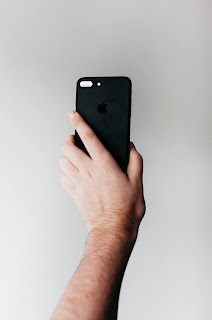Though many people think of them as devices, WiFi and
MiFi are trademarked brand names. But what is the difference in WiFi and MiFi?
In short, one carries the WiFi signal and is a device, while the other is the technology behind
the signal.
WiFi™ is a (now) series of wireless network protocols,
based on and designed to meet the various IEEE 802.11 standards. The name is
owned by the WiFi Alliance, a non-profit organization that certifies that wireless
devices meet the various IEEE 802.11 standards and conform to certain
standards of interoperability. For various reasons, not all devices that work
as compliant devices have been certified by the WiFi Alliance. WiFi is a device
standard technology that is used to describe the connection to the web, but it’s
not an actual device. Your 5G
smartphone has a chip in it that connects you to the internet, but the
technology behind the chip that connects all of your devices including your laptop,
and data cards to the MiFi, or hotspot is WiFi.
Did you know that your smartphone
has WiFi signal indicator showing the waves or bars of antenna strength? This
WiFi signal displays your coverage or Wi-Fi area in bars of strength. These are
also called your WiFi signal antenna strength. Without this WiFi
signal your devices won’t connect with the internet.
MiFi™ on the other hand, does refer to actual devices. MiFi
was trademarked as a brand name by the (then) Novatel Wireless company (now
Inseego Corp.). Though there are exceptions to the trademarking, e.g. wireless
operator 3 in the U.K and MiFi Networks Pvt Ltd in India. Some people call MiFi
a router since it is a piece of equipment, while others call it a hotspot.
MiFi devices are essentially mobile hotspots and are sold
by quite a few companies with a variety of available features and
functionality. Most MiFi devices will support 3G, 4G, and now many support 5G
technology. They are available at varying price points with such features as SD
cards for additional data storage, backward compatibility and GPS functionality
to name a few. In November, 2019 the first 5G MiFi device supporting up to 16
devices was launched by Vodafone Qata along with Inseego Corp. (a pioneer in 5G
and IoT device-to-cloud solutions). Tech is constantly changing but
knowing the tech terms can
help you understand what devices you need and the signals you need to access the
internet.
Auditel focuses on bringing
telecom refunds from billing mistakes and errors inside your tech
invoices. Did you know that most states collect higher taxes, surcharges, and fees
on wireless services than on other taxable goods and services? telecom
technology taxes collected in error. Many of these telecom
tax errors come from mistakes in tech devices, mobile assets, data
usages, telecom taxes, telecom
surcharges, telecom tariffs, in both telecom
regulated services and non-regulated
service monthly fees and charges.
We work for our clients to collect telecom refunds for wired
and wireless telecom contract violations, telecom
contract non-compliances, and in wireless contract non compliances
as well. Telecommunication invoices contain a variety of local taxes, state
taxes, and surcharges for each state, along with federal fees and
usage charges, USF,
FUSF, 9-1-1
or 911 fees. More telecom taxes are reviewed and analyzed for county and gross sales receipts, tax
exemptions and so much more. Learn about the
Auditel Challenge and find out what’s inside your phone, data, VOIP,
internet, and wireless invoices or call 800-473-565five.
Watch our Real Telecom Savings Example videos on Auditel
Youtube Channel:
Why have A Telecom
Audit Telecom Refunds Part 1 Why
have a Telecom Audit Telecom Refunds Part 2 Why Have a Telecom Audit Telecom Refunds
Part 3 Forward Savings


No comments:
Post a Comment